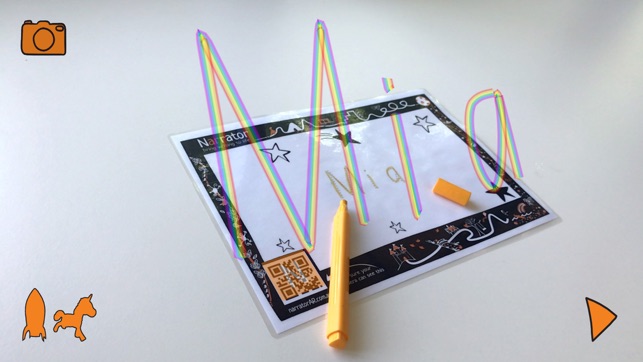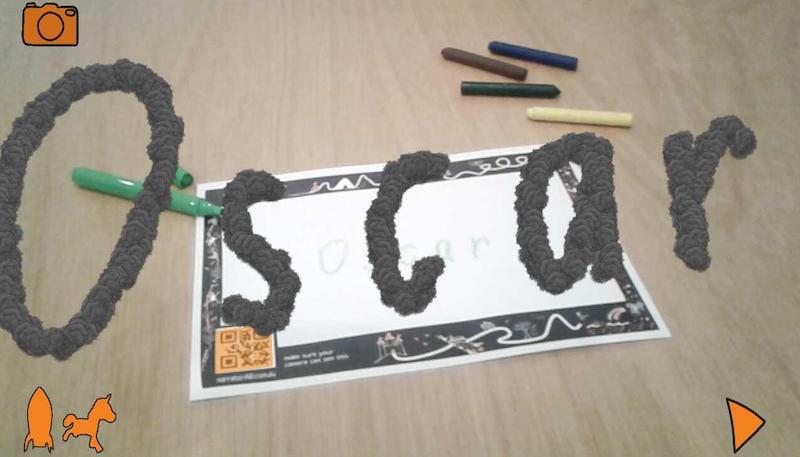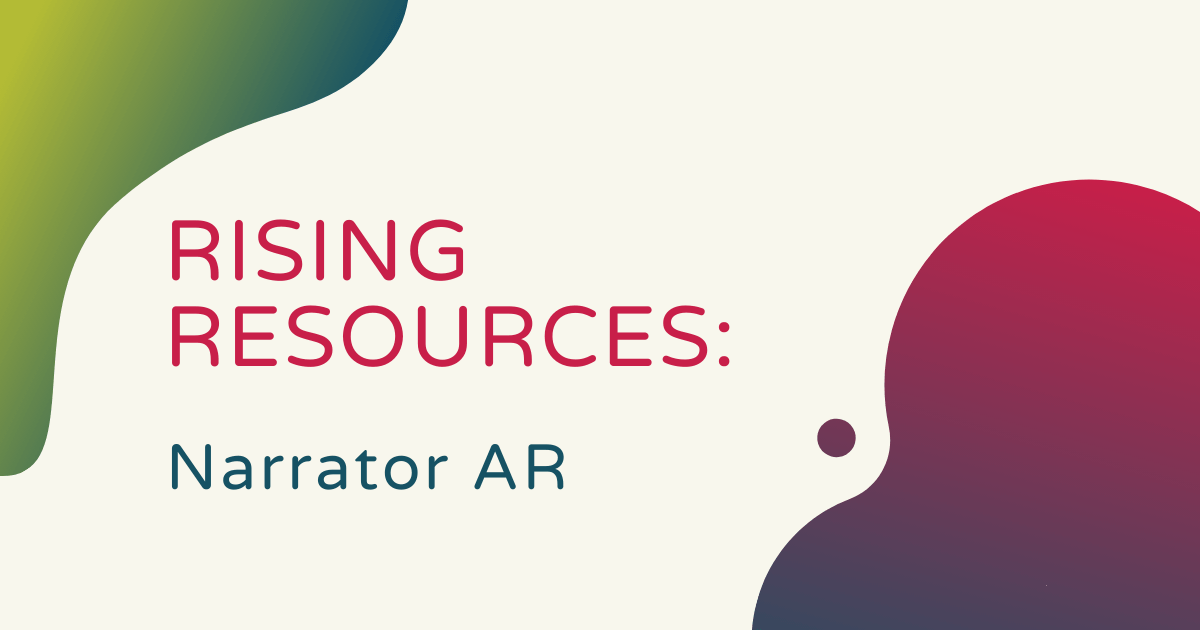Despite the technological advances in our world, some skills truly stand the test of time. Take handwriting, for example. Most of us don't think about it anymore, but it is a critically important ability for every student. Even as digital communication and communicating through content dominate life today, handwriting can truly help students develop key core skills. Plus, different technologies now often help them progress more quickly and enjoy learning it more deeply. You see where we're going with this. For the latest edition of our Rising Resources series, we are exploring Narrator AR—a digital handwriting tool that combines all the intrigue and immersion of augmented reality and the continued importance of bolstering handwriting skills.
Narrator AR is a free mobile app that students can use as early on as four years old and one of the coolest tools for teaching writing. Since many of them grow up with tablets and other devices impacting their lives, it shouldn't be too tough for teachers to convince them to try it out. While it's certainly viable in introducing handwriting to kids at this age, it may, however, have a greater impact in kindergarten. After all, that's when they're really beginning to learn to write letters and numbers. Narrator AR is specifically for use in the early education grades and its AR-based functionality helps students to develop one of the most important fine motor skills in handwriting.
Students can use the Narrator AR app on tablets or mobile phones. It's available on both the iOS app store and Google Play store. Drawing on the power of augmented reality, this tool helps teachers create a truly engaging learning experience. When using the Narrator AR app, children see words, letters, and sentences literally jump off the screen as they start to recognize the correct letter formations, which is great for visual learners, specifically. It's also designed to empower students to learn the key basics as they create logical solutions. Since they're in full control rather than passively responding to obvious prompts, the Narrator AR tool helps enable deeper learning rather than simply providing them with solutions.
Since they're constantly using their fingers to respond to the prompts, students stay engaged from start to end. The app is also completely safe for children who are this age, ad-free, and accessible offline. Whether working independently or with their teachers, they can explore various AR activities and more in-depth and purposeful lesson plans. Once set up with their Narrator AR app and accounts, each of these two sections are found within the platform. They help promote the combination of active hands and active brains, which helps catalyze development in early elementary students.
Students actually pick up a pen and follow the on-screen prompts as they make writing motions with their hands. They'll see these motions reflected on-screen in real time and learn to create words and sentences by following cues. Among other key early learning skills, students will bolster their fine motor development, cognitive learning, and play-driven brain activity. Since the activities and lessons have game-like elements to them and the on-screen visuals are extremely appealing, Narrator AR helps students to connect writing development with enjoyment. It can also inspire them to pick up a pen and write on their own more often.

The Narrator AR team has also emphasized the early window for creative development. According to some experts from NASA, almost every five-year-old child can achieve something known as 'creative genius.' As a comparison, only two percent of adults can even achieve this. For that reason, capitalizing on that innate creativity window is so important in a child's overall development. Since AR is so engaging, combining the technology with a child's natural inquiry has proven to be really valuable. Beyond that, Narrator AR serves as active technology meaning children use it to do things—not to consume digital content.
To use Narrator AR with students, educators can start by downloading a single lesson plan or a lesson plan pack. You can find them on the Narrator AR site by clicking here. Teachers then need to print each activity template, taking care to make sure there are enough copies for every student. These templates also feature dotted number and letter outlines for students to trace. When paired with the Narrator AR app, they'll place the template and device next to each other and move their pen or pencil over the outlines. That is how kids will see results appear on the screen of their device in real time and in AR!
From there, students can get started and launch the app right from their device. Once open, it activates the augmented reality experience immediately. From there, students will simply select either the rocket or the unicorn and hold their devices over their printed page. There's a QR code on every printout and, once their camera picks that up, a large orange button appears on-screen. Clicking the button enables children to try writing the word themselves and displays it in augmented reality.
While there are, of course, separate tech-based writing tools for preschool children, Narrator AR is more for those children who are able to hold a pen or pencil and have some reading experience. With the stroke of a pen, students become empowered to trace the words they see on the printed pages. Not only can they see their work displayed in AR, they will also subconsciously improve their fine motor and cognitive functions in the process. Since it's based on augmented reality, Narrator AR helps engage the young brains of students more effectively than simply tracing letters or numbers on 2D surfaces alone. Plus, they can do it again and again as many times as they want.

To help save instructors time, the Narrator AR team has created a slew of lesson plans. They also provide peace of mind in knowing that you're integrating classroom experiences with the greatest upside possible. Also, the lesson plans all meet early literacy and technology education standards. They even include easily identifiable and structured sections to help both the students and teachers understand the premise behind each element as well as how to get the most out of each experience. Some of these elements include a list of learning objectives, preparation suggestions, materials to gather, a detailed activity plan, discussion and extension prompts, evidence of impact, and more.
While the lesson plans are free, there are also additional AR activities that educators can purchase as well as handwriting templates. The templates begin at the basic level with traceable letters and numbers before incorporating names, short words, and then storytelling. Each template even has its own individual codes for activating the AR functionality in conjunction with the Narrator AR app. Since each kid learns differently and has different interests, the variety in the templates is very valuable.
As for their paid AR activities, there are options for use at home or school. Educators can purchase basic ABC or 123 activity books or bundles with options for physical or digital copies as well. AR activity books and family bundles are also available to purchase. Clearly, Narrator AR is a tool that could offer numerous potential benefits to early learners. Whether it's capitalizing on their interests, improving their penmanship, or something else, it certainly seems like a fantastic platform. If you're interested in learning more about it and how it might help students out, head over to their site. After that, check out our store for additional hands-on tech tools. Follow us on Twitter/X and Instagram for more.



